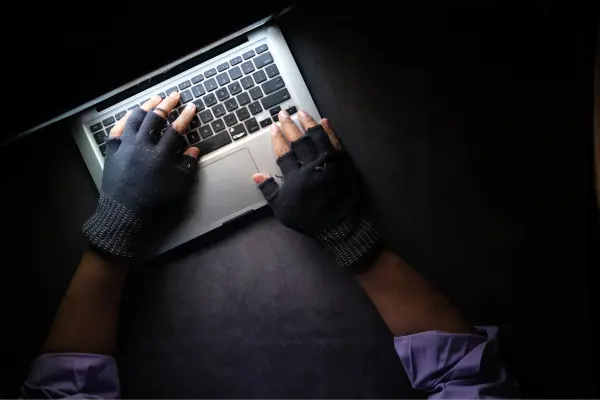WHAT IS DIGITAL SEXUAL ABUSE ACCORDING TO BOLIVIAN LAW

PENALTIES FOR DIGITAL SEXUAL ABUSE OF MINORS
The base penalty is four to eight years of imprisonment. The sentence increases by one-third when there is pressure, intimidation, blackmail, or threats with the intent to:
- Obtain images, videos, photos, or live transmissions of the minor’s sexual content; or
- Promote a physical meeting.
An increase of “one-third” means approximately a 33% rise in the final sentence. For instance, if the sentence is set at 6 years, an aggravating factor would raise it to around 8 years.
KEY EVIDENCE IN DIGITAL SEXUAL ABUSE CASES
Act quickly and avoid manipulating evidence. In practice, crucial evidence includes full conversations with timestamps and user data, accurate screenshots, metadata, platform records, and, where appropriate, connection data. Do not delete or forward any messages; preserve devices and seek legal guidance to request data preservation from platforms while the Prosecutor’s Office collects the required information.
BOLIVIAN AND INTERNATIONAL LEGAL FRAMEWORK AGAINST CHILD SEXUAL ABUSE ONLINE
The Bolivian Constitution guarantees the right to physical integrity and to live free from violence (Art. 15), and prioritizes the protection of children and adolescents (Art. 60). When international human rights treaties provide more favorable protection, they prevail (Art. 256). Globally, the Convention on the Rights of the Child mandates the prevention of all forms of violence (Art. 19) and sexual abuse or exploitation (Art. 34), reinforced by its Optional Protocol on the Sale of Children, Child Prostitution, and Child Pornography. General Comment No. 25 (2021) clarifies how these rights apply in the digital environment, while General Comment No. 14 guides the analysis of the best interests of the child in every decision.
EXAMPLES OF DIGITAL SEXUAL ABUSE OF MINORS
- Case 1: A 35-year-old man contacts a 14-year-old girl via a social media platform. After a brief conversation, he sends her explicit sexual photos and videos without her requesting them. The girl’s family reports him. This behavior constitutes the base offense, punishable by 4 to 8 years in prison.
- Case 2: A man convinces a 16-year-old girl he met in an online game to send him intimate photos. He later extorts her, threatening to publish the photos unless she sends explicit videos. This blackmail to obtain more material is an aggravating factor that increases the prison sentence.
- Case 3: A 42-year-old man pretends to be a teenager to gain the trust of a 15-year-old boy. When the minor refuses to meet in person, the man uses personal information (address, parents’ names) to threaten and pressure the family into arranging a meeting. Using threats to promote an in-person encounter is an aggravating factor that results in a harsher sentence.
LEGAL AND PROCEDURAL MEASURES AGAINST DIGITAL SEXUAL ABUSE
Criminal prosecution is public, and investigations can begin without a private complaint. The Prosecutor’s Office may request protective measures (such as no-contact orders, psychological support, and interviews in child-friendly settings) to prevent revictimization. In high-risk cases, judges may impose strict precautionary measures and order the urgent preservation of relevant digital data.
In summary, Bolivian law offers a strong legal response to digital sexual abuse: sending sexual content to minors via electronic means is a punishable offense, and penalties increase when coercion is used to obtain material or facilitate a meeting. Early action, evidence preservation, and a focus on the child’s best interests are essential to protect victims and ensure effective prosecution.
Our law firm provides specialized legal services in cybercrime and child and adolescent protection. If you are facing a similar situation or require legal advice, do not hesitate to contact our professional team.
Frequently Asked Questions (FAQs)
Is it a crime if the sexual content was created using artificial intelligence or deepfake technology?
Yes. Simulated or AI-generated erotic or sexual content is also covered under this offense.
Is it still a crime if the minor agreed to receive the sexual messages?
Yes. Under Bolivian law, a minor’s consent does not eliminate the criminal nature of the act.
Does the minor have to send sexual images for it to be considered a crime?
No. The crime is established solely by the adult sending sexual content to the minor.
Is it a crime even if no physical meeting occurred?
Yes. If there was intimidation or threats to promote a meeting, the penalty is aggravated.
What should I do with chats, audios, or videos received?
Do not delete or modify anything. Preserve the devices and seek legal advice to request data preservation.
Can an investigation proceed if the digital platform is based outside Bolivia?
Yes. It is possible to request international legal assistance and obtain data from foreign companies.
The content of this article does not reflect the technical opinion of Rigoberto Paredes & Associates and should not be considered a substitute for legal advice. The information presented herein corresponds to the date of publication and may be outdated at the time of reading. Rigoberto Paredes & Associates assumes no responsibility for keeping the information in this article up to date, as legal regulations may change over time.



